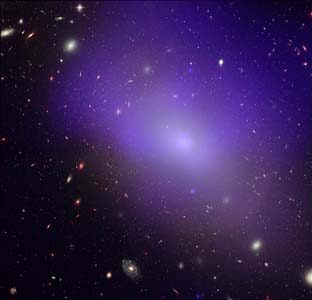Giant galaxy might be a cosmic fossil
 Paris, Feb 6: Astronomers have used the NASA/ESA Hubble Space Telescope to capture a new image of the galaxy NGC 1132, which is most probably, a cosmic fossil – the aftermath of an enormous multi-galactic pile-up.
Paris, Feb 6: Astronomers have used the NASA/ESA Hubble Space Telescope to capture a new image of the galaxy NGC 1132, which is most probably, a cosmic fossil – the aftermath of an enormous multi-galactic pile-up.
NGC 1132 is located approximately 320 million light-years away in the constellation of Eridanus.
This galaxy belongs to a category of galaxies called giant ellipticals. NGC 1132, together with the small dwarf galaxies surrounding it, are dubbed a "fossil group" as they are most likely the remains of a group of galaxies that merged together in the recent past.
In visible light, NGC 1132 appears as a single, isolated, giant elliptical galaxy.
But, scientists have found that NGC 1132 resides in an enormous halo of dark matter, comparable to the amount of dark matter usually found in an entire group of tens or hundreds of galaxies.
It also has a strong X-ray glow from an abundant amount of hot gas – an amount normally only found in galaxy groups. Its X-ray glow extends over a region of space ten times larger than the 120,000 light-year radius it has in visible light.
Scientists have looked into two explanations as a likely origin of this fossil galactic group.
The most likely explanation is that they are the end products of a cosmic feeding frenzy in which a large ‘cannibal’ galaxy devours all of its neighbours.
A less likely explanation is that they may be very rare objects that formed in a region or period of time where the growth of moderate-sized galaxies was somehow suppressed, and only one large galaxy formed.
According to the ‘cannibalism’ theory, it has been known that sometimes gravity makes galaxies collide and eventually merge into one single galaxy.
There is strong evidence that the Milky Way is one such cannibal that has snacked on numerous smaller galaxies during its lifetime, inheriting their stars in the process.
In the new Hubble image, NGC 1132 is seen surrounded by thousands of ancient globular clusters, swarming around the galaxy like bees around a hive. These globular clusters are likely to be the survivors of the disruption of their cannibalised parent galaxies that have been eaten by NGC 1132 and may reveal its merger history. (ANI)